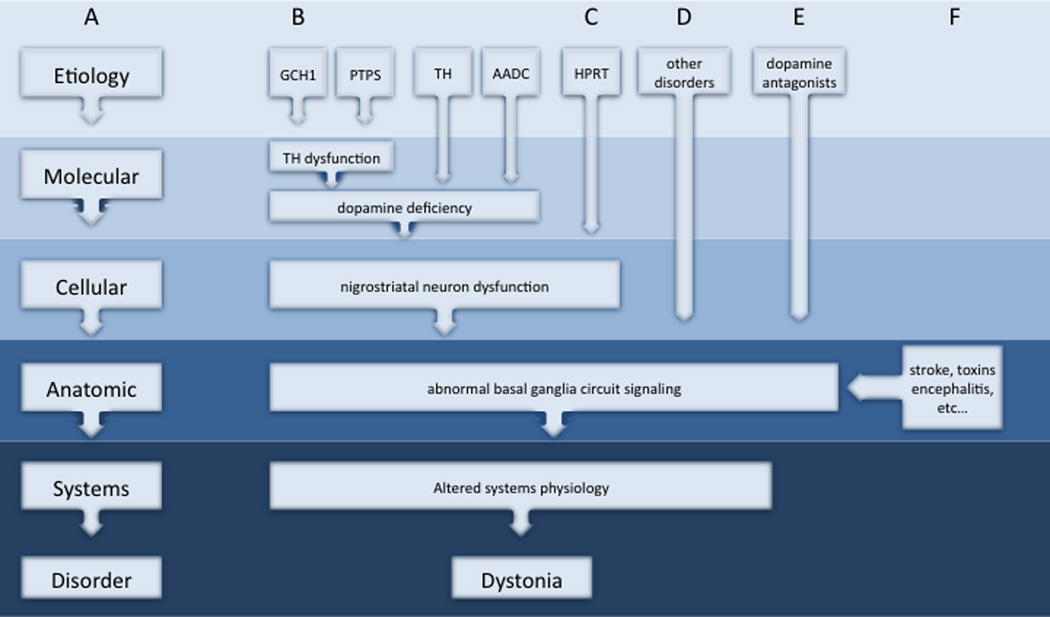Figure 2.
Example model for shared mechanisms of pathogenesis at different biological levels. A simplified scheme for pathogenesis begins with a specific etiology and proceeds through a series of downstream processes in the pathogenesis of dystonia (A). Some disorders are known to disrupt a common molecular pathway involving dopamine synthesis via different molecular mechanisms (B). Two gene defects (GCH1 and PTPS) affect dopamine synthesis by disrupting biopterin metabolism, while two other gene defects (TH and AADC) affect other steps in dopamine synthesis.323 All 4 of these disorders disrupt nigrostriatal dopamine neuron function, signaling in basal ganglia circuits, and alter systems physiology to produce dystonia. Nigrostriatal dopamine neurons may be affected via other genetic mechanisms (C: HPRT)207 or exposure to dopamine receptor antagonists(D)43 to cause dystonia. Damage may also occur to basal ganglia circuits more directly, as in some mitochondrial disorders, glutaric aciduria, biotin-responsive basal ganglia disease, 3-nitropropionic acid exposure (E).14

